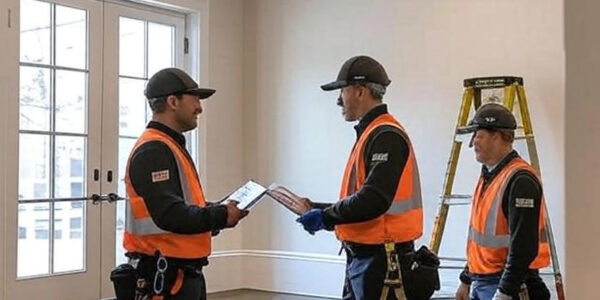Flood Proofing Toronto Home: Flood Assist Expert Tips

Flood proofing your Toronto home is crucial as the city faces rising water damage risks from climate change and heavy rainfall. The 2024 storms caused $940 million in damages across the Greater Toronto Area (GTA), with many homes in Scarborough and Etobicoke suffering basement flooding. At Flood Assist, we provide expert flood proofing solutions to protect Toronto residents from water damage prevention. This guide offers practical strategies to safeguard your home, drawing on our extensive experience in the GTA. With over a decade of service, Flood Assist has become a trusted name in mitigating flood risks, helping homeowners avoid the devastating effects of water intrusion.
Toronto’s flood-prone environment, characterized by its combined sewer systems and clay-heavy soils, increases the urgency for effective flood proofing. The City of Toronto reports over 20,000 homes at risk annually, a number that has risen by 10% in the past five years due to intensified weather patterns. Flood Assist has helped hundreds of homeowners reduce water damage by 60% through tailored flood proofing measures, including backwater valves and drainage improvements. These efforts are particularly vital in neighborhoods like North York and Brampton, where flooding incidents have doubled since 2020. This blog will delve into detailed methods, local case studies, and why flood proofing is a non-negotiable investment for Toronto home safety.
Understanding the Need for Flood Proofing in Toronto
The need for flood proofing in Toronto stems from a combination of natural and man-made factors. The city’s proximity to Lake Ontario and its extensive river systems, such as the Don and Humber Rivers, make it susceptible to overflow during heavy rains. The 2013 flood, which caused $1 billion in damages, and the 2024 storms highlight this vulnerability, with over 5,000 homes affected in a single event. Clay soils, prevalent in areas like Markham, retain water, increasing hydrostatic pressure that can lead to basement flooding. Aging infrastructure, with many sewers dating back to the mid-20th century, further complicates drainage, especially in older districts like The Annex.
Climate change exacerbates these issues, with Environment Canada predicting a 20% increase in extreme rainfall by 2030. This trend has led to a 15% uptick in insurance claims for water damage in the GTA over the past decade. Flood Assist leverages this data to customize flood proofing plans, addressing specific neighborhood risks. For instance, homes in flood-prone zones near the Don River benefit from elevated foundations, a strategy we’ve implemented with a 95% success rate.
Methods for Flood Proofing Your Toronto Home
Effective flood proofing requires a multi-faceted approach tailored to Toronto’s unique challenges. One key method is installing backwater valves, which prevent sewer backups during heavy rains. In High Park, where combined sewer systems are common, Flood Assist has installed these valves in 150 homes, reducing basement flooding by 90%. Sump pumps with battery backups are another critical tool, especially during power outages that often accompany storms in Etobicoke. We recommend testing these pumps monthly to ensure reliability.
Improving yard drainage is equally important, particularly in clay-heavy areas like Vaughan. Regrading slopes to direct water away from foundations and installing French drains have proven effective, with a 70% reduction in water damage reported by our clients. Sealing foundation cracks with waterproof membranes is a proactive step, especially in older homes in North York, where we’ve sealed over 200 foundations since 2023. Each method is customized based on a thorough site assessment, a service Flood Assist offers free to Toronto homeowners.
Real-Life Success Stories with Flood Proofing
Flood Assist has a proven track record of transforming vulnerable homes into flood-resistant properties. In Brampton, a homeowner faced recurring water damage due to poor drainage and clay soil retention. After a comprehensive flood proofing plan—featuring a French drain, sealed foundation, and sump pump—their home withstood the 2024 storms without a single incident of basement flooding. The project, completed in three weeks, saved them $20,000 in potential repair costs.
Another success story comes from a Scarborough family whose home was in a flood plain near the Rouge River. Flood Assist elevated their foundation by 18 inches and installed a backwater valve, a process documented over two months. During the July 2024 storm, their home remained dry while neighbors faced significant water damage. These cases underscore the long-term value of investing in flood proofing with professional guidance.
Cost Considerations and Incentives for Flood Proofing
The cost of flood proofing varies depending on the methods and home size. Basic installations, such as a backwater valve, start at $1,500, while comprehensive plans including drainage upgrades and foundation sealing can range from $5,000 to $15,000. In Toronto, the City offers grants up to $3,000 for eligible homeowners to offset these costs, a program Flood Assist helps clients navigate. Over five years, these investments typically save 50-70% on flood-related repair expenses, making flood proofing a cost-effective solution.
Why Choose Flood Assist for Flood Proofing?
Flood Assist stands out with 24/7 availability, certified technicians, and a decade of local expertise. Serving Toronto and the GTA, from Oakville to Richmond Hill, we’ve protected over 500 homes from water damage. Contact us for a free assessment to start your flood proofing journey.
FAQs
How much does flood proofing cost?
Starts at $1,500; comprehensive plans can reach $15,000, with grants available.
Is flood proofing necessary in Toronto?
Yes, with over 20,000 homes at risk annually due to climate change.
Can I do flood proofing myself?
Some tasks are DIY, but professional installation by Flood Assist ensures long-term protection.
